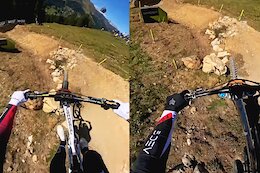Since it was announced at SAP TechEd 2021, SAP offers digital learnings free of charge to everybody interested in SAP products on https://learning.sap.com. In this blog post, I want to present to you the learning journey Administrating SAP Business Technology Platform.
Introduction
SAP offers plenty of services to enhance your business in one central place: SAP Business Technology Platform (SAP BTP). This platform-as-a-service (PaaS) provides the central place to improve your handling of data and analytics, integrate data and processes, or develop and extend software by leveraging such SAP BTP services.
But before you can operate a service, you must define the basis like directories, subaccounts, and runtime environments. Users need authorizations and applications need connections to service provides. There are various configuration options to define your service landscape suitable for your business scenarios. All of this should also be observed and monitored concerning performance or costs.
This is exactly what this learning journey is about: Administrating the basis for operating SAP cloud services in SAP BTP. And yes, I chose the term “basis” on purpose for those people out there, who are right now on their journey from on-premise to cloud. Just take a seat in our learning journey.
The units in the current version are the following:
Overview, Responsibilities and GuidanceArchitectureIdentity and Access ManagementConfigurationConnectivityObservability and MonitoringCost and Usage Management
Content
1. Overview, Responsibilities and Guidance
Unit 1 describes shortly the SAP Business Technology Platform and its commercial models. Most importantly, it analyzes responsibilities and guidance resources for SAP BTP.
There is no exercise in this unit. If you want to know more, please check our learning journey Discovering SAP Business Technology Platform acting as a prerequisite.
2. Architecture
Unit 2 covers the SAP BTP account model consisting of global accounts, directories, and subaccounts. After service subscriptions, the runtime environments in SAP BTP are managed. Cloud Foundry and Kyma are enabled and (name-) spaces created to instantiate services in these runtimes. Finaly, the ABAP environment is enabled and the landscape portal is used to manage ABAP system hibernation.
The following is exercised:
Create DirectoriesCreate a Subaccount in a DirectoryCreate Subaccounts with Default Provider and RegionEntitle a Service in a DirectoryEntitle and Subscribe a Service in a SubaccountAdd a Service Plan for Cloud Foundry EnvironmentEnable and Configure a Cloud Foundry EnvironmentCreate a Service Instance in a Cloud FoundryAdd a Service Plan for Kyma EnvironmentEnable a Kyma RuntimeCreate a Namespace in a Kyma RuntimeCreate a Service Instance in KymaEntitle and Create an ABAP EnvironmentEntitle and Create Web Access for ABAPCreate a Subaccount for OperationEntitle, Create, and Authorize the Landscape PortalCheck ABAP System Details and Manage System Hibernation
3. Identity and Access Management
Unit 3 explains the identity and access management on SAP BTP on all levels and distinguishes business from platform users. How to manage users and authorizations on SAP BTP with roles and role collections connected to identity providers is followed by a summary of the security concept for cloud native applications. This leads to the management of users and authorizations in SAP BTP environments.
The following is exercised:
Create Administrator User in a SubaccountInspect and Assign Predefined Role Collections for ApplicationsAssign Developer Authorizations in Cloud FoundryManage Cluster Roles in KymaManage Business Roles in the ABAP Environment
4. Configuration
Unit 4 provides various ways to configure the SAP BTP starting with boosters, which are guided interactive steps to configure services. Operating the command line interface (CLI) tools btp CLI for SAP BTP and cf CLI for Cloud Foundry are like the kubectl for Kyma the most direct way to interact with SAP BTP on a technical level. To manage SAP BTP with Terraform incorporates btp CLI to automate infrastructure provisioning and management.
The following is exercised:
Start a Booster in SAP BTPOperate SAP BTP Command Line Interface (btp CLI)Setting and Configuring Kubectl for KymaCreate a Terraform Configuration for SAP BTP
5. Connectivity
Unit 5 starts with analyzing connectivity in SAP BTP and jumps to using destinations on subaccount, service, and environment level. To connect the SAP BTP to on-premise systems, operating the cloud connector is mandatory for any SAP BTP service.
The following is exercised:
Create a DestinationHow to Install Cloud Connector on LinuxReplace the UI Certificate in Cloud ConnectorHow to Configure First SAP BTP Subaccount in Cloud ConnectorConfigure Access Control (HTTP)How to Use a Cloud to On-Premise Scenario
6. Observability and Monitoring
Unit 6 imparts the observability strategy of SAP BTP with SAP Cloud Application Lifecycle Management (ALM) in its core. It offers central observability tools like business process, integration, user, or health monitoring. Including the local observability tools SAP Alert Notification Service and SAP Automation Pilot, SAP BTP offers a comprehensive monitoring approach.
There is no exercise in this unit. If you want to know more, please check our learning journey Operating with SAP Cloud ALM, especially unit 2 (Using Monitoring and Analysis).
7. Cost and Usage Management
Unit 7 closes the learning journey with cost and usage management, a topic often requested by customers.
There is no exercise in this unit but many slides and videos with hints around handling the costs of SAP BTP efficiently.
Summary
If you have read so far, it seems that you are really thinking about consuming the learning journey. Don’t hesitate and jump right in:
https://learning.sap.com/learning-journeys/administrating-sap-business-technology-platform
If you want to put your hands on some live system, the SAP BTP trial is just on click away:
https://www.sap.com/products/technology-platform/pricing.html
If you are more interested in a customer course for SAP BTP administration, please visit https://training.sap.com. The ADMCLD (Introduction to SAP Business Technology Platform (BTP) Administration) is a 3-day-course offered as physical and virtual event:
https://training.sap.com/course/admcld
For any other questions around the offerings of SAP Learning Services, please jump to our community page and get in contact with us:
https://pages.community.sap.com/topics/training-certification
Happy learning
Stefan
Since it was announced at SAP TechEd 2021, SAP offers digital learnings free of charge to everybody interested in SAP products on https://learning.sap.com. In this blog post, I want to present to you the learning journey Administrating SAP Business Technology Platform. IntroductionSAP offers plenty of services to enhance your business in one central place: SAP Business Technology Platform (SAP BTP). This platform-as-a-service (PaaS) provides the central place to improve your handling of data and analytics, integrate data and processes, or develop and extend software by leveraging such SAP BTP services.But before you can operate a service, you must define the basis like directories, subaccounts, and runtime environments. Users need authorizations and applications need connections to service provides. There are various configuration options to define your service landscape suitable for your business scenarios. All of this should also be observed and monitored concerning performance or costs.This is exactly what this learning journey is about: Administrating the basis for operating SAP cloud services in SAP BTP. And yes, I chose the term “basis” on purpose for those people out there, who are right now on their journey from on-premise to cloud. Just take a seat in our learning journey.The units in the current version are the following:Overview, Responsibilities and GuidanceArchitectureIdentity and Access ManagementConfigurationConnectivityObservability and MonitoringCost and Usage Management Content1. Overview, Responsibilities and GuidanceUnit 1 describes shortly the SAP Business Technology Platform and its commercial models. Most importantly, it analyzes responsibilities and guidance resources for SAP BTP.There is no exercise in this unit. If you want to know more, please check our learning journey Discovering SAP Business Technology Platform acting as a prerequisite.2. ArchitectureUnit 2 covers the SAP BTP account model consisting of global accounts, directories, and subaccounts. After service subscriptions, the runtime environments in SAP BTP are managed. Cloud Foundry and Kyma are enabled and (name-) spaces created to instantiate services in these runtimes. Finaly, the ABAP environment is enabled and the landscape portal is used to manage ABAP system hibernation.The following is exercised:Create DirectoriesCreate a Subaccount in a DirectoryCreate Subaccounts with Default Provider and RegionEntitle a Service in a DirectoryEntitle and Subscribe a Service in a SubaccountAdd a Service Plan for Cloud Foundry EnvironmentEnable and Configure a Cloud Foundry EnvironmentCreate a Service Instance in a Cloud FoundryAdd a Service Plan for Kyma EnvironmentEnable a Kyma RuntimeCreate a Namespace in a Kyma RuntimeCreate a Service Instance in KymaEntitle and Create an ABAP EnvironmentEntitle and Create Web Access for ABAPCreate a Subaccount for OperationEntitle, Create, and Authorize the Landscape PortalCheck ABAP System Details and Manage System Hibernation3. Identity and Access ManagementUnit 3 explains the identity and access management on SAP BTP on all levels and distinguishes business from platform users. How to manage users and authorizations on SAP BTP with roles and role collections connected to identity providers is followed by a summary of the security concept for cloud native applications. This leads to the management of users and authorizations in SAP BTP environments.The following is exercised:Create Administrator User in a SubaccountInspect and Assign Predefined Role Collections for ApplicationsAssign Developer Authorizations in Cloud FoundryManage Cluster Roles in KymaManage Business Roles in the ABAP Environment4. ConfigurationUnit 4 provides various ways to configure the SAP BTP starting with boosters, which are guided interactive steps to configure services. Operating the command line interface (CLI) tools btp CLI for SAP BTP and cf CLI for Cloud Foundry are like the kubectl for Kyma the most direct way to interact with SAP BTP on a technical level. To manage SAP BTP with Terraform incorporates btp CLI to automate infrastructure provisioning and management.The following is exercised:Start a Booster in SAP BTPOperate SAP BTP Command Line Interface (btp CLI)Setting and Configuring Kubectl for KymaCreate a Terraform Configuration for SAP BTP5. ConnectivityUnit 5 starts with analyzing connectivity in SAP BTP and jumps to using destinations on subaccount, service, and environment level. To connect the SAP BTP to on-premise systems, operating the cloud connector is mandatory for any SAP BTP service.The following is exercised:Create a DestinationHow to Install Cloud Connector on LinuxReplace the UI Certificate in Cloud ConnectorHow to Configure First SAP BTP Subaccount in Cloud ConnectorConfigure Access Control (HTTP)How to Use a Cloud to On-Premise Scenario6. Observability and MonitoringUnit 6 imparts the observability strategy of SAP BTP with SAP Cloud Application Lifecycle Management (ALM) in its core. It offers central observability tools like business process, integration, user, or health monitoring. Including the local observability tools SAP Alert Notification Service and SAP Automation Pilot, SAP BTP offers a comprehensive monitoring approach.There is no exercise in this unit. If you want to know more, please check our learning journey Operating with SAP Cloud ALM, especially unit 2 (Using Monitoring and Analysis).7. Cost and Usage ManagementUnit 7 closes the learning journey with cost and usage management, a topic often requested by customers.There is no exercise in this unit but many slides and videos with hints around handling the costs of SAP BTP efficiently. SummaryIf you have read so far, it seems that you are really thinking about consuming the learning journey. Don’t hesitate and jump right in:https://learning.sap.com/learning-journeys/administrating-sap-business-technology-platformIf you want to put your hands on some live system, the SAP BTP trial is just on click away:https://www.sap.com/products/technology-platform/pricing.htmlIf you are more interested in a customer course for SAP BTP administration, please visit https://training.sap.com. The ADMCLD (Introduction to SAP Business Technology Platform (BTP) Administration) is a 3-day-course offered as physical and virtual event:https://training.sap.com/course/admcldFor any other questions around the offerings of SAP Learning Services, please jump to our community page and get in contact with us:https://pages.community.sap.com/topics/training-certificationHappy learningStefan Read More Technology Blogs by SAP articles
#SAP
#SAPTechnologyblog








